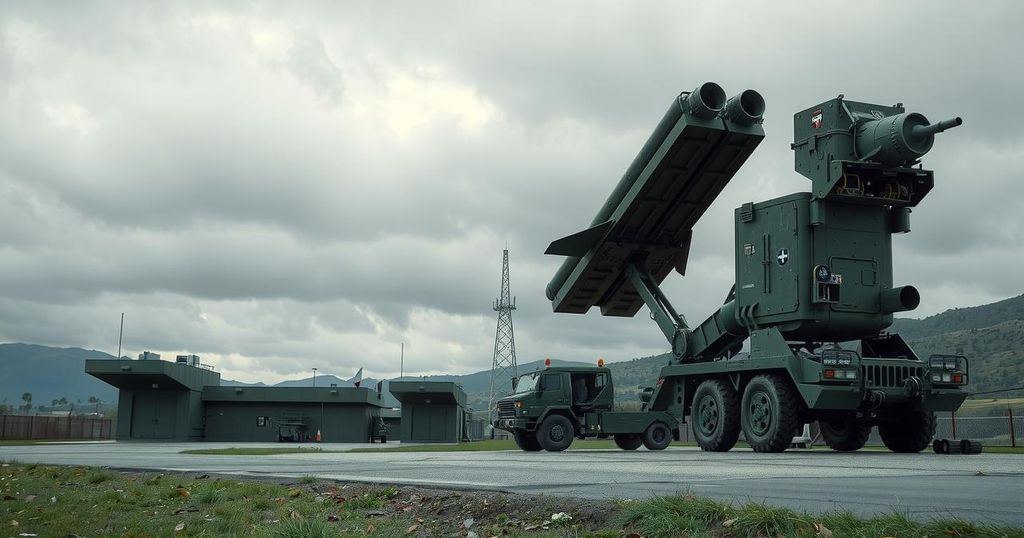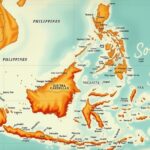U.S. Missile Deployment in the Philippines Raises Tensions with China
The U.S. deployment of the Typhon Missile System in the Philippines signifies a strategic move to counter Chinese military power and strengthen alliances in the region. The system enhances defense capabilities for U.S. allies, especially amid rising tensions in the South China Sea, while eliciting strong reactions from China and raising concerns about escalation risks.
The recent deployment of a U.S. missile system in the Philippines has heightened tensions with China, as it strategically targets key Chinese military and commercial sites. The Typhon Missile System, capable of launching missiles over 1,200 miles, marks a significant shift in U.S. military presence since the Cold War, indicating America’s commitment to countering Chinese military expansion in the Pacific region.
The Typhon system serves as a crucial element for U.S. defense allies such as the Philippines and Taiwan, amidst rising tensions in the South China Sea. The presence of these land-based missiles could bolster defenses against potential Chinese aggression, particularly regarding Taiwan, which China has threatened to take by force if necessary.
China has reacted strongly against the Typhon’s installation, accusing the U.S. and the Philippines of escalating an arms race in the region. This deployment has become a significant test of the U.S. commitment to its allies and is raising concerns about President Trump’s readiness to defend them in the face of Chinese threat.
The Typhon system can operate two missile types: long-range Tomahawk missiles, targeting critical infrastructure along Southeastern China, and Standard Missile 6 (SM-6), designed for targeting ships and intercepting various incoming threats. These capabilities are viewed by military experts as vital to deterring Chinese aggression.
Initially transported for joint military exercises, the Typhon’s deployment has been extended indefinitely, with Philippine commanders expressing interest in acquiring the system for their forces. This reflects the growing strategic collaboration between the U.S. and the Philippines, especially as the Philippine military engages more actively in countering Chinese presence.
China’s Foreign Ministry has demanded the removal of the Typhon system, warning of potential retaliatory measures. Furthermore, responses from Russian officials have likened this deployment to historical tensions during the Cold War, evoking fears of a similar escalation.
The Typhon’s mobility and ease of deployment provide strategic advantages over traditional ship-based systems. This flexibility may lead to its eventual distribution throughout the Indo-Pacific region, complicating the adversaries’ ability to anticipate U.S. strikes.
The significance of the Typhon’s deployment emphasizes the Philippines’ growing role under the Biden administration. President Ferdinand Marcos Jr. has opened military bases for U.S. troops as Philippine forces confront Chinese operations in contested waters, posing a challenge to Beijing’s dominance.
While U.S. allies like Japan have yet to embrace hosting such systems, they are exploring similar capabilities independently. Some government officials perceive the Typhon as instrumental in advancing U.S. deterrent capabilities, yet others express concerns about provoking China and potential unintended escalations.
Marcos has stated willingness to remove the Typhon if Chinese aggression ceases, illustrating complexities in regional diplomacy. Meanwhile, anxiety persists in the Philippines about the Typhon potentially becoming part of broader geopolitical negotiations involving the U.S. and China, raising the stakes for smaller allied nations like the Philippines.
The deployment of the Typhon Missile System in the Philippines represents a significant shift in U.S. military strategy in Asia, aimed at countering Chinese military expansion. While it strengthens alliances and regional deterrence, it also escalates tensions and raises concerns over potential retaliatory actions from China. The evolving dynamics underscore the complex interplay of regional diplomacy, military strategy, and international relations in the Indo-Pacific.
Original Source: www.livemint.com








Post Comment